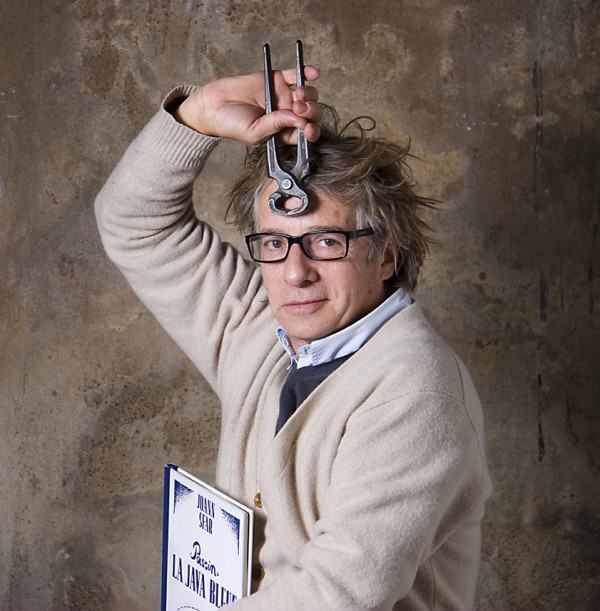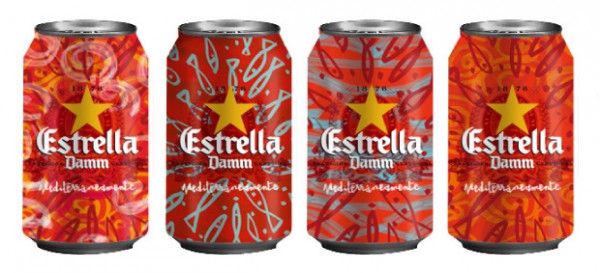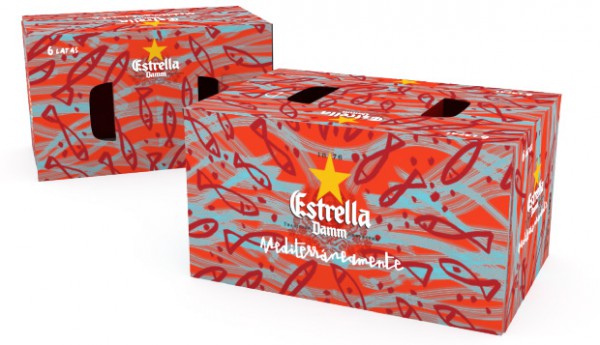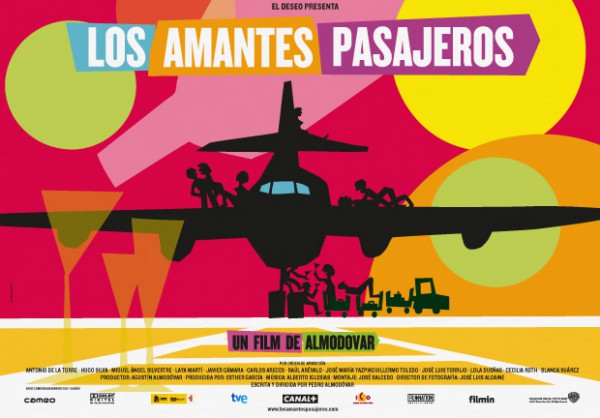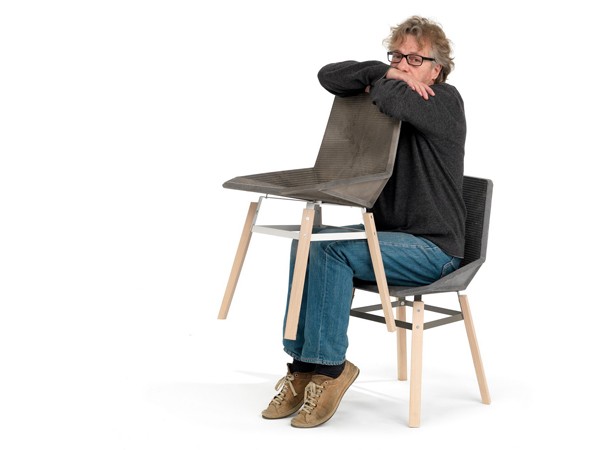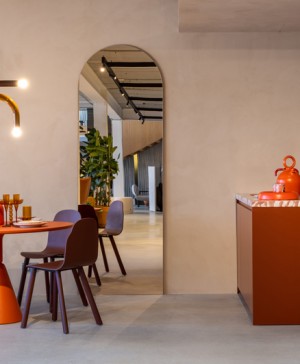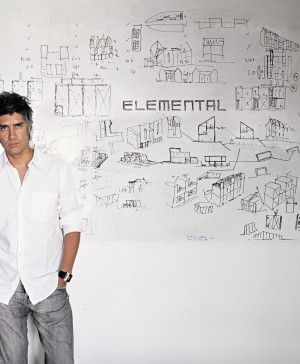“I prefer my work speaks for itself, sometimes I am a bit of a loudmouth” – Javier Mariscal answers your questions.
Yolanda: What is your opinion of contemporary design compared to that of the grand designs on the 1960s and 1970s?
I don’t know if you are referring to Spanish design or European or global, but here in Spain design has come along in leaps and bounds. Now it’s all about team work. Producers and companies now understand the ‘added value’ of design. In the sixties and seventies it was a more intimate process between designers and artisans. Producers were smaller and more specialised.
Alfonso: To be successful as a designer, how much depends on talent and how much on bravura?
You need to have it equal parts, as well as be able to communicate and convince. So I suppose that the same than in flirting.
Albert: Apart from your talent strictly related to design, you seem to be comfortable being a type of ‘showman’. Am I right?
Our work is about communicating. You need to transmit a concept, a finality, an aesthetic, an analysis… But also emotion, humour, joy and happiness.
Natalia: When will I have the pleasure of working for you?
Our studio is open to all and a lot of people pass through it, although of late we are working with a much smaller team. Write to us and put yourself forward.
Alicia: Does Spain have a ‘Design Culture’? If not, why not?
When interests of both industry and designers are the same, then a culture emerges. Over the last 25 years in this country, there has been a complete change of attitude. And I’m glad this also has to do with appreciating Spanish crafts’ values, traditions and materials.
Mónica: Who are your favourite painters?
Many, from the ancients who painted caves to the contemporary painters and including the Russian Constructivists, the Cubists, Picasso, Miró, Calder and especially those that are inspired by the Mediterranean light… The list is endless.
Design for an Estrella Damm promotional pack from last summer.
Jorge: As a design student, what’s the best way to get your work known?
It’s all about making your work visible. I think that in these times of social networking, you can move it around in a lot of media. But I would particularly recommend to try with those that you feel your work fits, because of a shared values or aesthetic.
Adriana: In your opinion and experience, what are the basic steps (if they exist) in setting up your own studio?
Define very accurately what you are offering, your style and your dreams and then offer it to clients who you think will appreciate them. But always be yourself.
Birlenboin: To draw the way you do, basically two things are needed; a special state of mind, one where spontaneity flows without conditioning the final result, and to reduce the capacity of control so that the drawing, painting or illustration retains a spontaneous freshness and the poetry that is the result of the moment lived in the execution of the work. It is very difficult to reach this level of liberty because it’s a question of retaining the capability we had to draw when we were born, lost through trying to understand the world that surrounds us. Can you explain the relationship between your brain and hand? Does it only occur when you draw?
I always say that one shouldn’t lose the urge to play. Children see that a rock is an aeroplane, a cardboard box is a car… they let their imaginations fly. Drawing helps me to understand the world. I found hard to write when I was at school, but I started to draw words and that’s how I understood them. I still do that.
Entredosmares: I follow the illustrations you do on your travels and in your spare time that you save on your iPad. The best part is seeing ‘your reality’. But I must ask, what is it you most like doing?
I like a lot of things; travelling, drawing and of course enjoying it. But it is even better If I get paid for it!
Image from the film Los Amantes Pasajeros (I’m So Excited) by Pedro Almodóvar.
Roberto: If I had designed pieces of the same calibre as Isamu Noguchi, the Bouroullec Brothers, Poul Christiansen, Holger Strom and others, what advice would you give me to be able to contact big producers and get paid for my work?
These days you can find out information about producers easily… If you believe you have a good design, you can show it and propose it to good producers of any speciality you choose.
José Manuel: Like my friend Alonso above, what gave you the right to ask for such as exorbitant sum of money to do the poster for the Festival de cine de Málaga years ago? And how much of your talent went into it?
I don’t really know how much money you are talking about, but I am sure the studio reached an agreement with the festival. Before taking on a project we always present various proposals according to the briefing of the event. We meet with the client, examine the work and reach an agreement. I don’t know how to measure talent, perhaps you have a guideline?
Guillermo: Some years ago, a project of yours, a sculpture in Barcelona’s Plaza Cerdá, was cancelled and City Hall decided to install trees and lawn instead. Thinking about the Plaza de les Glòries, and the changes that I believe you are making in the shopping centre there, what is in your opinion the answer for this plaza? Can we utilise the elevated traffic ‘ring’, perhaps making it into an unusual boulevard?
Glòries is the place that has changed the most over the past years. The neighbourhood has filled up with new residents, avenues have been opened, a lot of things have changed and the plaza has to adapt to this new reality. Up until now it has been ruled by cars. In the future I would like to see it ruled by people.
Jorge: What do you think of the royalty system of paying a designer? What other viable alternative would you put forward?
This royalty system is only established in industrial design; graphic, interior design, web, animation or illustration needs to be looked at separately. In industrial design, the manufacturer costs out production, the moulds, materials, marketing, advertising, etc. If a designer gets good results for a company, he can negotiate a better deal next time around.
Green chair, designed for Mobles 114.
Eduardo: Do you still say you design whilst sitting on the toilet or do you take your work more seriously now?
I have been working for 40 years now and I have taken things seriously from the beginning. I prefer that my work speaks for itself, sometimes I am a bit of a loudmouth.
Pepe: Your Lotek lamp for Artemide reminds me of the style of the Memphis Group, which you were part of, and who were against the ‘black box’ post-Bauhaus designs of the 1970s and had a sense of humour that those black, perfect and boring designs didn’t. For me, it has this feeling but is more contemporary. Am I right or wrong? It has hints of Richard Shaper or the Tolomeo by Michele De Lucchi and Giancarlo Fassina…
More about LoTek in diarioDESIGN.
Well, thank you. It was a very difficult commission right from the beginning. The ‘engineer’ Ernesto Gismondi (founder of Artemide) came to the studio one day and said: ‘Mariscal, why don’t we make a lamp?’. He told me about the sheer number of Tolomeos they had sold in the world. I told him I wasn’t an engineer and I couldn’t do anything as sophisticated or as attractive as the Tolomeo. He told me that his team would work out the engineering part and I should work on the concept. For this lamp we have used 19th century solutions in the base, 20th century solutions in the arm and 21st in the head. It was a long and difficult process but I am very happy with the result.

